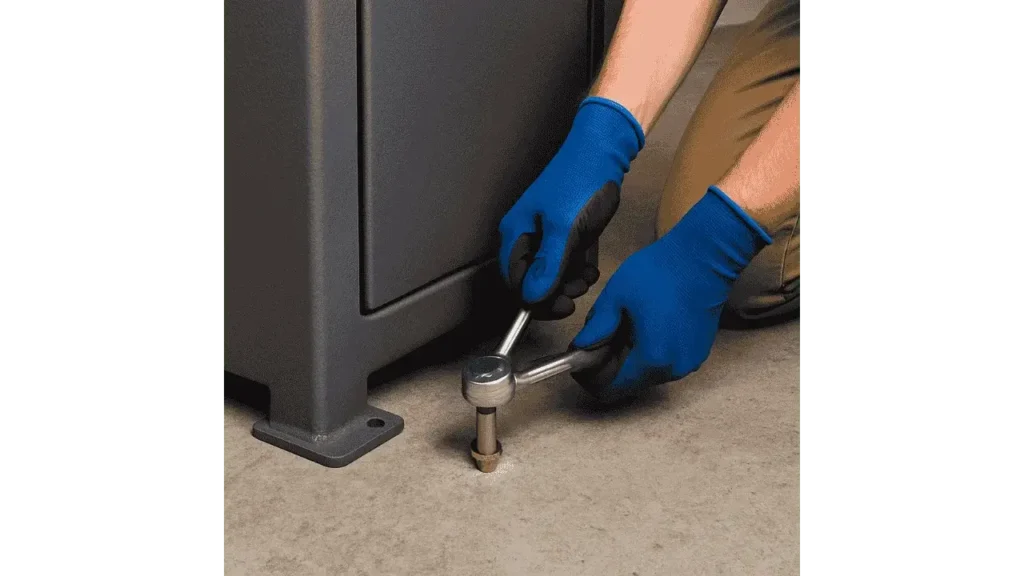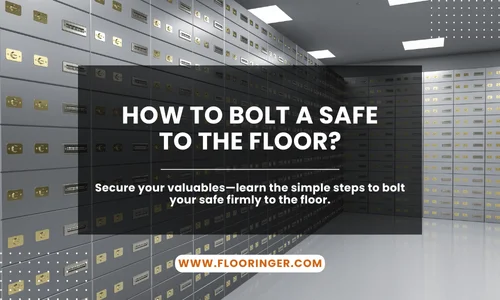A safe is only as secure as the way it’s installed. While a heavy safe may seem difficult to move, bolting it to the floor adds a crucial layer of protection against theft, accidents, and even natural disasters. Without proper anchoring, a determined thief could tip it or carry it away, and an unsecured safe can also become a hazard during emergencies. In this guide, you’ll learn why bolting a safe to the floor, especially to a wooden floor, is essential, what factors to consider before installation, and how to complete the process safely and effectively.

The Importance of Bolting a Safe to the Floor:
Securing a safe to the floor is essential for enhancing the protection of valuable belongings. A bolted-down safe provides an additional layer of security against theft, preventing burglars from easily removing it. Moreover, it offers better stability, reducing the risk of tipping over and causing injuries or damage. Proper installation ensures the safe remains in place even in emergency situations such as earthquakes.
Considerations Before Bolting a Safe to the Floor:
The Type of Safe
Before starting the installation process, it is crucial to consider the type of safe you have. Some safes are specifically designed with pre-drilled holes to facilitate floor mounting, while others may require special modifications. Fireproof and waterproof safes may have insulation layers that can be compromised if not handled correctly during the bolting process.
Identifying the Ideal Location
Selecting the right location is vital for both security and accessibility. Choose an area that is not easily visible but still convenient for regular access. Closets, offices, and bedrooms are common choices. Ensure the location allows for proper clearance when opening the safe door.
Assessing the Floor Type
The type of flooring plays a significant role in the installation process. Wooden floors require a different approach compared to concrete surfaces. Understanding the structure of your wooden subfloor will help determine the best anchoring method to use for maximum stability and security.
Learn More: Are Swiffer Wet Cloths Safe for Wood Floors?
Evaluating the Safe’s Weight and Dimensions
The weight and size of the safe should also be taken into account. Heavier safes require sturdier anchoring to prevent movement over time. Measuring the dimensions of the safe and the available floor space will help ensure a proper fit and secure installation.
Detailed Steps on How to Bolt a Safe to the Floor:
Step 1: Positioning the Safe
Carefully position the safe in the desired location, ensuring it aligns with the floor joists if possible. Proper alignment enhances the structural support and prevents unnecessary stress on the wooden floor.
Step 2: Locating the Mounting Holes
Most safes come with pre-drilled mounting holes at the bottom. Check the manufacturer’s instructions to identify their exact placement. If no holes exist, consult a professional to determine if drilling is an option without voiding the warranty.
Step 3: Marking the Hole Locations
Using a pencil or marker, outline the positions where the bolts will be inserted. Ensure the markings are precise to avoid misalignment during drilling.
Step 4: Drilling the Anchor Holes
Use an appropriate drill bit for wood to create the anchor holes. Drilling slowly and carefully will help prevent splintering and damage to the wooden floor.
Step 5: Cleaning the Drilled Holes
After drilling, remove any debris or sawdust from the holes using a vacuum or brush. Clean holes ensure a snug fit for the bolts and enhance stability.
Step 6: Inserting and Securing the Bolts
Insert the appropriate anchor bolts into the drilled holes and tighten them securely using a wrench. Make sure the safe is firmly attached to the floor without any wobbling.
Bolting a Safe to a Wooden Floor:
When securing a safe to a wooden floor, using lag bolts or wood screws with washers provides the best grip. Additionally, reinforcing the area beneath the floor with a wooden backing can further improve stability.
Conclusion:
Bolting a safe to a wooden floor is a practical and effective way to enhance its security and stability. Proper preparation, accurate positioning, and the right tools are key to ensuring a successful installation. By following the outlined steps, you can securely anchor your safe, providing peace of mind and protection for your valuable possessions.
